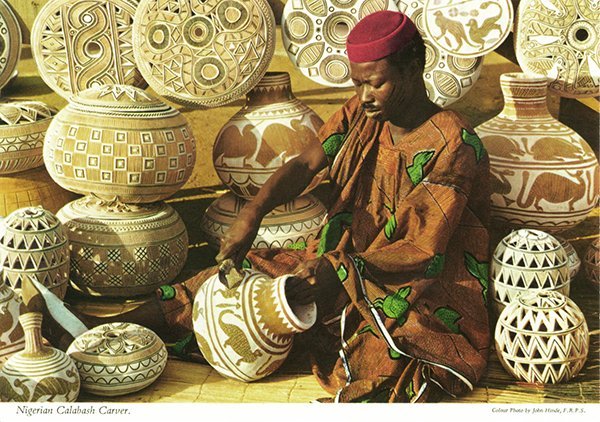
The Owu-Ife War (1821-1828)
Thread! Retweet and Comment
It was a bloody conflict that broke out between the people of Ile-Ife and natives of the neighbouring town of Owu between 1821/1828
| Yorubas onion Afrobeats Buena Abuja rema sowore #asuu #Davido |
Thread! Retweet and Comment
It was a bloody conflict that broke out between the people of Ile-Ife and natives of the neighbouring town of Owu between 1821/1828
| Yorubas onion Afrobeats Buena Abuja rema sowore #asuu #Davido |

The Owu-Ife war, as its name denotes, was a bloody conflict that broke out between the people of Ile-Ife and natives of the neighbouring town of Owu between 1821 and 1828. Its significance lies in the fact that it was a war that opened the gate of tragedy for other
wars in Yoruba land.
Causes of the Owu-Ife War
Owu-Ife war broke out barely four years after the collapse of the Old Oyo empire. On the surface, the war outbreak was the result of a disagreement between two market women over five cowries. The main cause, however, was the hatred
Causes of the Owu-Ife War
Owu-Ife war broke out barely four years after the collapse of the Old Oyo empire. On the surface, the war outbreak was the result of a disagreement between two market women over five cowries. The main cause, however, was the hatred
which Ife people had created over the years for Owu people over the latter’s policy of using Oyo refugees for forced labour and even selling them off as slaves.
The Owu-Ife war broke out in the wake of 1821 when Owu declared total war on Ife. The people of Ife
The Owu-Ife war broke out in the wake of 1821 when Owu declared total war on Ife. The people of Ife
Regarded Owu’s action as a vagrant violation of the land’s tradition and constitution and quickly called on the rest of the Yorubas to condemn Owu for its wilful action. Many towns heeded to this appeal; among them were ljebu and the neighbouring town of Ikoyi.
The appearance of these Ife allies on the battlefield, unfortunately, prolonged the war. When it finally came to an end in 1828, it left Owu in total ruin, a mere devastated village, a position in which it was for many years before it finally disappeared from the political
theatre of Nigeria.
Aftermath
Although the war came to an end in 1828, its effects and the destructive fire it lit continued to spread to every part of Yoruba land. Its end also witnessed the arrival of the Fulanis from the north with the intention of fishing in troubled
Aftermath
Although the war came to an end in 1828, its effects and the destructive fire it lit continued to spread to every part of Yoruba land. Its end also witnessed the arrival of the Fulanis from the north with the intention of fishing in troubled
water. The Fulanis’ first encounter with the combined forces of the Yorubas took place in 1840 at Osogbo in which they were defeated. It was this defeat that transformed them from the menacing enemies which they wanted to be to mere supporters of recalcitrant sides.
The Osogbo war brought the Yorubas together but not long after they won the war, they reverted to their inter-tribal wars. One of these wars was the Egba-Dahomey war.
References:
Law, R. (1973). THE OWU WAR IN YORUBA HISTORY. Journal of the Historical Society of Nigeria, 7(1),
References:
Law, R. (1973). THE OWU WAR IN YORUBA HISTORY. Journal of the Historical Society of Nigeria, 7(1),
141-147. Retrieved March 11, 2021,
Omipidan, Teslim. (2018). Historical wars in Yorubaland. OldNaija.
Smith, R. (1973). Owu in Yoruba History. By A. L. Mabogunje and J. Omer-Cooper. Ibadan University Press, 1971. Pp. x + 123, ill., maps. 12s. 6d. (Nigerian). Africa, 43(1)
Omipidan, Teslim. (2018). Historical wars in Yorubaland. OldNaija.
Smith, R. (1973). Owu in Yoruba History. By A. L. Mabogunje and J. Omer-Cooper. Ibadan University Press, 1971. Pp. x + 123, ill., maps. 12s. 6d. (Nigerian). Africa, 43(1)
Follow @Yorubaness and Retweet ✨
Order our book "Yoruba Aphrodisiac and Herbal Recipe book"
Effective recipe to make healthy Herbs, Juice and Smoothie.
Download PDF: selar.co/qadi
Order our book "Yoruba Aphrodisiac and Herbal Recipe book"
Effective recipe to make healthy Herbs, Juice and Smoothie.
Download PDF: selar.co/qadi
You can also promote your Product/Services on our page, book your spot now! Click here: selar.co/xk4r
• • •
Missing some Tweet in this thread? You can try to
force a refresh












